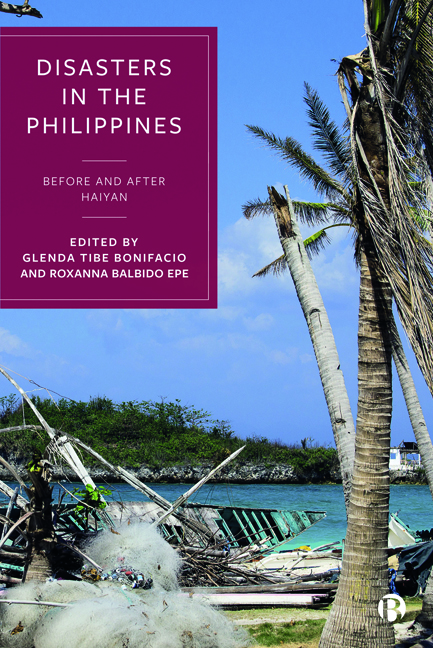10 - Gender and Labor Market Regimes in Post-Disaster Haiyan Communities in Leyte
Published online by Cambridge University Press: 18 January 2024
Summary
Introduction
Labor is gendered; a fact that is known to societies (Leacock and Safa 1986; McCarl Nielsen 1990; Meade and Wiesner-Hanks 2006). Who does what work and how is socially marked in diverse economic activities ranging from households to industries (Baron 1991; Blumberg 1991). The types of work performed by women and men— including girls, boys, and gender-diverse individuals— could change through time and place. Conditions for doing work could also change with age, marital status, familial responsibility, access to technology, and the environment (Game and Pringle 2020). While gender and labor in paid and unpaid work have been extensively studied (Redclift and Sinclair 1991; Hatt 1997; Bettio, Plantenga, and Smith 2013; Milkman 2016; Yenilmez and Huyugüzel Kisla 2021), those that arise from disasters are still part of an emerging field of study (Enarson and Dhar Chakrabarti 2009; Takasaki 2012; Kinnvall and Rydstrom 2019; Akter 2021).
The aftermath of a disaster creates new realities in local economies and gender relations. Gender is a recognized aspect of the difference between men and women, for example, in survival rates and impact on their economic and social well-being during and after the occurrence of disasters (Enarson 2000; Neumayer and Plümper 2007). Members of the LGBTQ+ (lesbian, gay, bisexual, transgender, queer + ) community have increased vulnerabilities during and after disasters such as isolation, discrimination, and violence (Reddy and Goodman 2019; Frank 2020). Displacement and migration often result in varying levels of social protection for members of affected households based on gender, class, and physical ability, among others (Oryema 2017). Post-disaster communities are unique in their ways of survival, resilience, and dynamics of intervenors in relief, reconstruction efforts, and development strategies. Governments, non-profit organizations, international aid agencies, and individual philanthropy work together or independently to address the humanitarian crisis and economic reconstruction, both in the short-term and long-term ventures. The interplay of these actors in creating labor market regimes in post-disaster communities affects labor participation of local populations; mainly, who benefits from it, who participates in it, and how they participate.
This chapter explores the relations between gender and labor market regimes that arise in post-Haiyan communities in Leyte. The worst-affected areas ravaged by super typhoon Haiyan were in Eastern Visayas, particularly in Tacloban City in Leyte.
- Type
- Chapter
- Information
- Disasters in the PhilippinesBefore and After Haiyan, pp. 198 - 219Publisher: Bristol University PressPrint publication year: 2023

